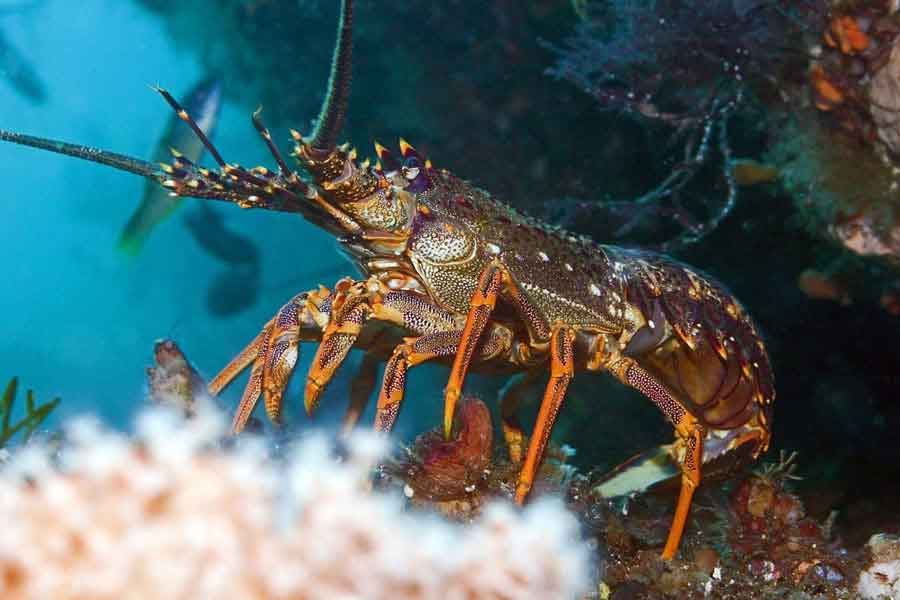
The migrations of marine animals are generally triggered by environmental changes such as water temperature, food abundance, day length, etc., and internal chemical changes like hormone secretion. However, these animals embarking on migratory journeys do not have predefined routes but instead mechanically respond to an instinctive impulse. During their journey, they follow signals in the sea that have guided their ancestors for hundreds or thousands of kilometers.
Lobsters are opportunistic predators that eat almost everything on the seafloor. To avoid being eaten, they take shelter during the day in their caves, with only their head and two large antennae protruding, thus protecting their vulnerable abdomen. However, when autumn arrives, the lobsters living near the island of Bimini in the Bahamas must migrate to deeper waters to avoid the hurricane season. During this migration, they have to traverse very smooth sandy bottoms where they would be highly exposed.
The ancestral solution to this problem is that the lobsters gather on the seafloor, forming long queues of up to fifty animals that interweave with each other. In this way, the antennae of the lobster behind protect the abdomen of the one in front. These formations move at a cruising speed, but if a threat arises, they quicken their pace and can reach speeds of up to five meters per minute. To avoid falling behind, the lobsters hook their first pair of legs onto the tail of the individual in front, preventing separation. In this way, they manage to cover 80 km in a week, reaching deeper waters away from the fury of hurricanes.
Although lobsters may resort to cannibalism in the absence of food, this does not prevent them from associating with each other to achieve their goal, as if each animal understands that it requires its fellow lobsters to stay alive.
«You cannot defend what you do not love, and you cannot love what you do not know.»

